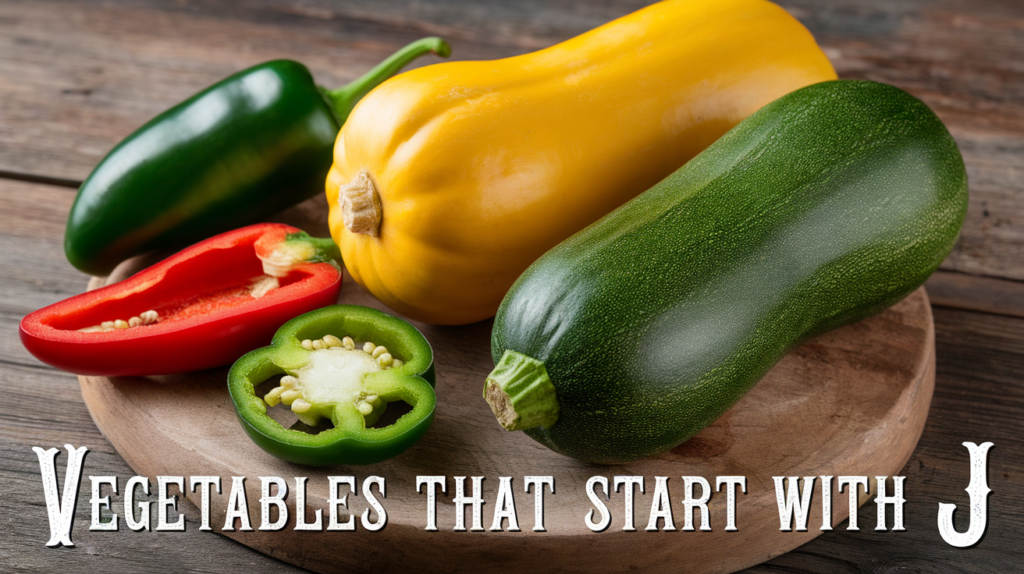Are you trying to add more variety to your meals? I get it. It’s easy to fall into a rut with the same old veggies. But did you know there’s a world of lesser-known vegetables waiting to be explored?
I’m here to help you spice up your diet with some unique finds. In this post, I’ll introduce you to 11 vegetables that start with the letter J. You’ll learn about their flavors, uses, and health benefits.
Let’s explore this list of J-vegetables that will make your grocery trips and meals more exciting.
Get ready to expand your culinary horizons!
1. Jicama
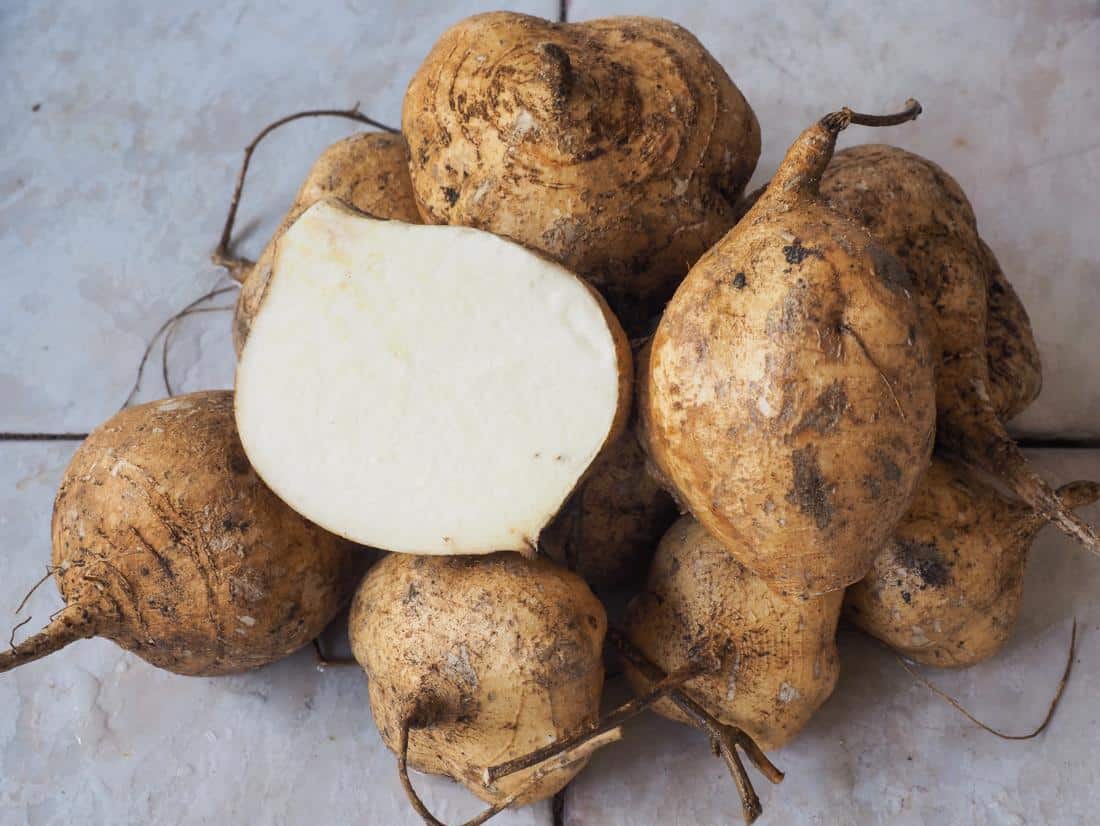
Jicama, often called the Mexican turnip, is a root vegetable known for its crisp texture and mildly sweet flavor. It is popular in salads and as a refreshing snack, especially in warm climates.
Nutritional Value:
- It is low in calories, high in fiber, and a good source of vitamin C.
- It contains inulin, a type of prebiotic fiber beneficial for gut health.
Culinary Uses:
- It is commonly eaten raw in salads or with lime and chili powder.
- It can be cooked in stir-fried soups or used as a crunchy topping.
Growing Tips:
- Thrives in warm climates with well-drained soil.
- Requires regular watering and plenty of sunlight for optimal growth.
Availability:
- Available year-round, with peak season in late fall.
- It can be found in most supermarkets and specialty grocery stores.
2. Jerusalem Artichoke
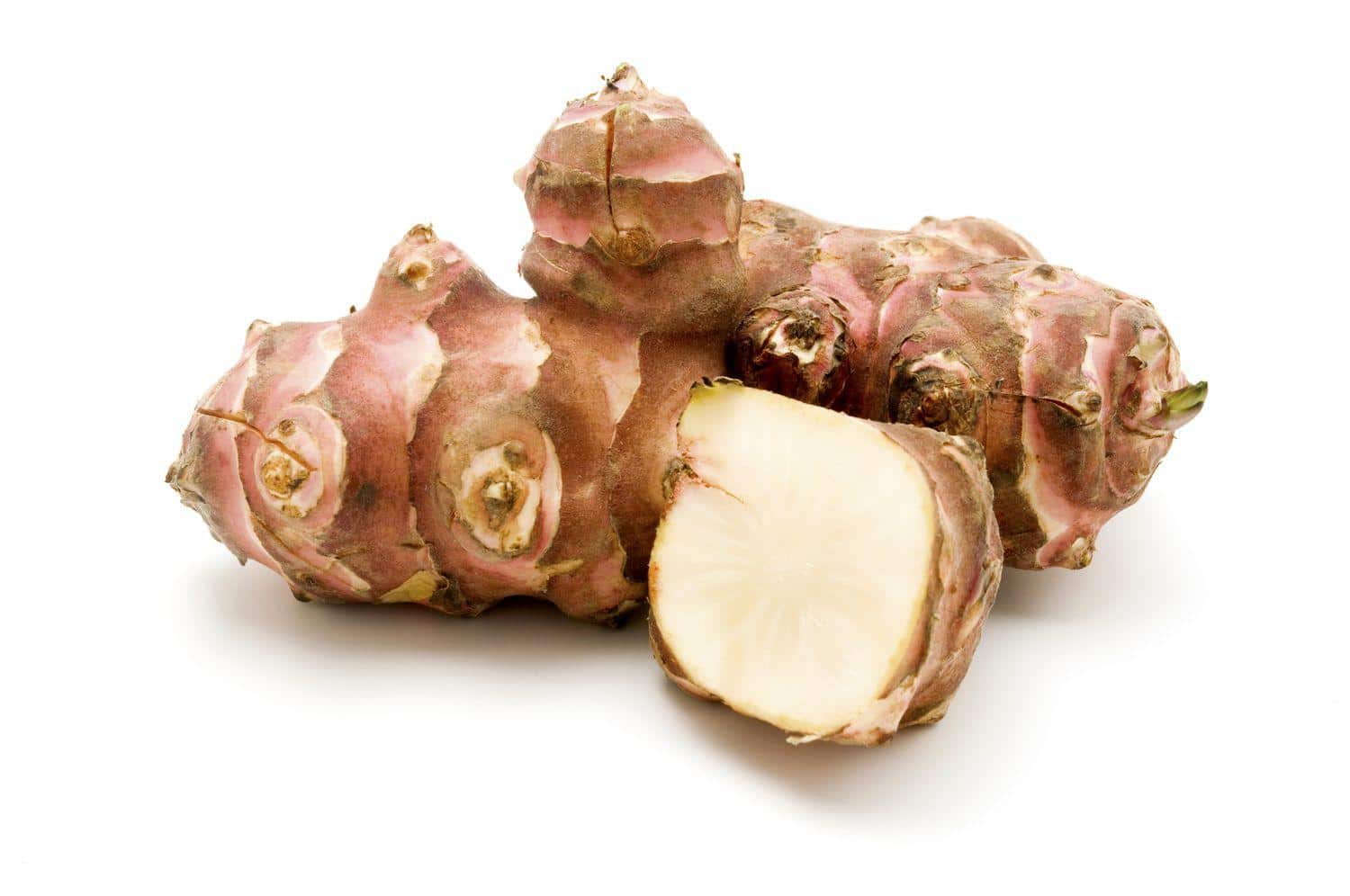
Jerusalem Artichoke, or sunchoke, is a nutty, slightly sweet tuber. Despite its name, it is not related to artichokes but rather to sunflowers.
Nutritional Value:
- High in iron, potassium, and dietary fiber.
- It contains inulin, which helps with blood sugar regulation.
Culinary Uses:
- It can be roasted, boiled, or mashed like potatoes.
- Adds a sweet, nutty flavor to soups and stews.
Growing Tips:
- Prefers well-drained soil and full sunlight.
- Plant in early spring and harvest in late fall after the first frost.
Availability:
- Typically available from October through March.
- Found in farmers’ markets and specialty grocery stores.
3. Jalapeño Pepper
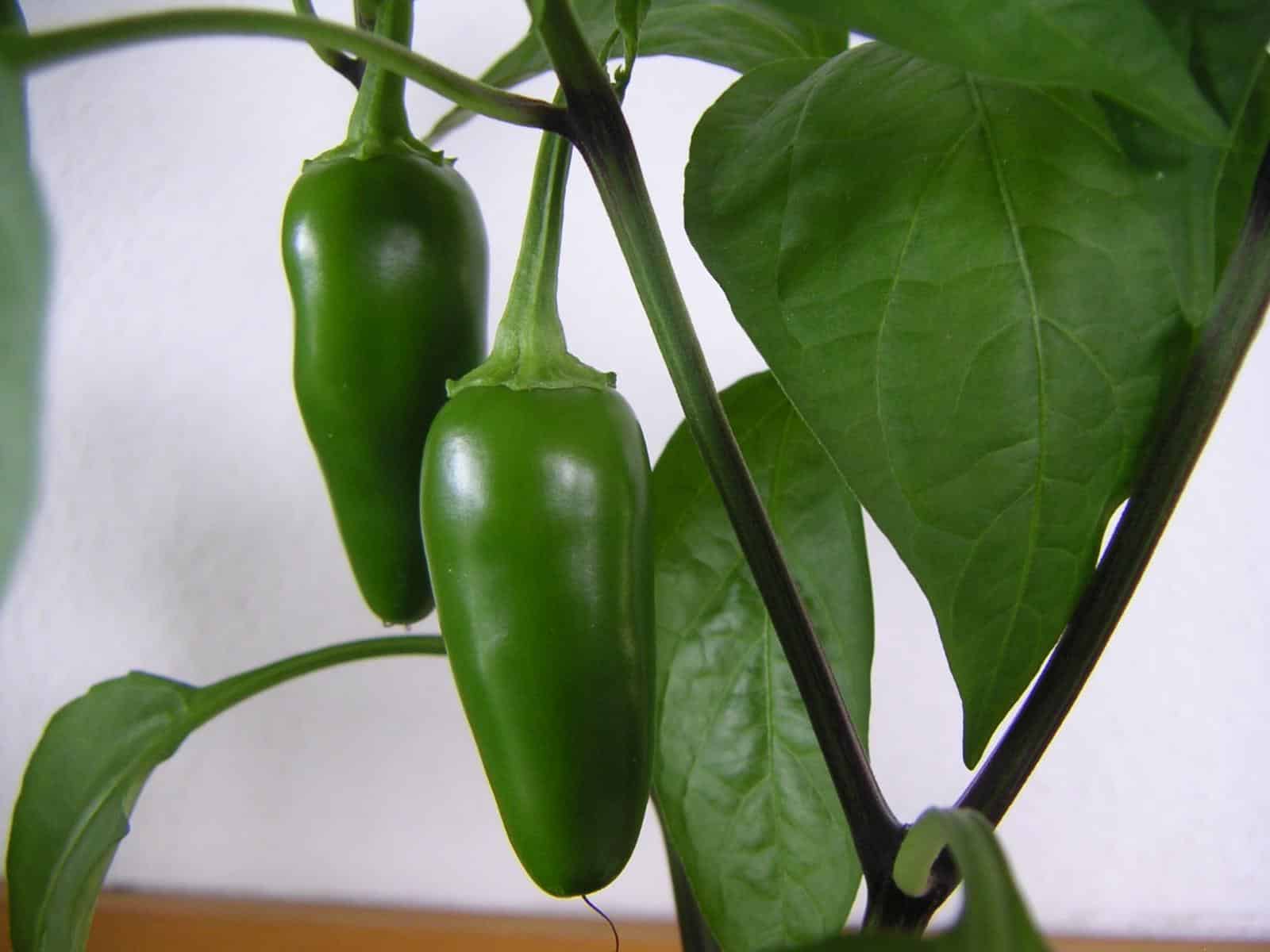
Jalapeño Pepper is a small, green, or red chili pepper with a spicy kick. It is widely used in Mexican cuisine and has gained popularity worldwide.
Nutritional Value:
- It is rich in vitamin C and capsaicin, which have anti-inflammatory properties.
- Low in calories and high in antioxidants.
Culinary Uses:
- They are used in salsas, sauces, and toppings for various dishes.
- It can be eaten raw, pickled, or cooked in various recipes.
Growing Tips:
- Requires a warm climate with plenty of sunlight.
- Prefers well-drained, fertile soil and regular watering.
Availability:
- Available year-round, with peak season in late summer.
- It is found in most grocery stores and farmers’ markets.
4. Japanese Pumpkin (Kabocha)
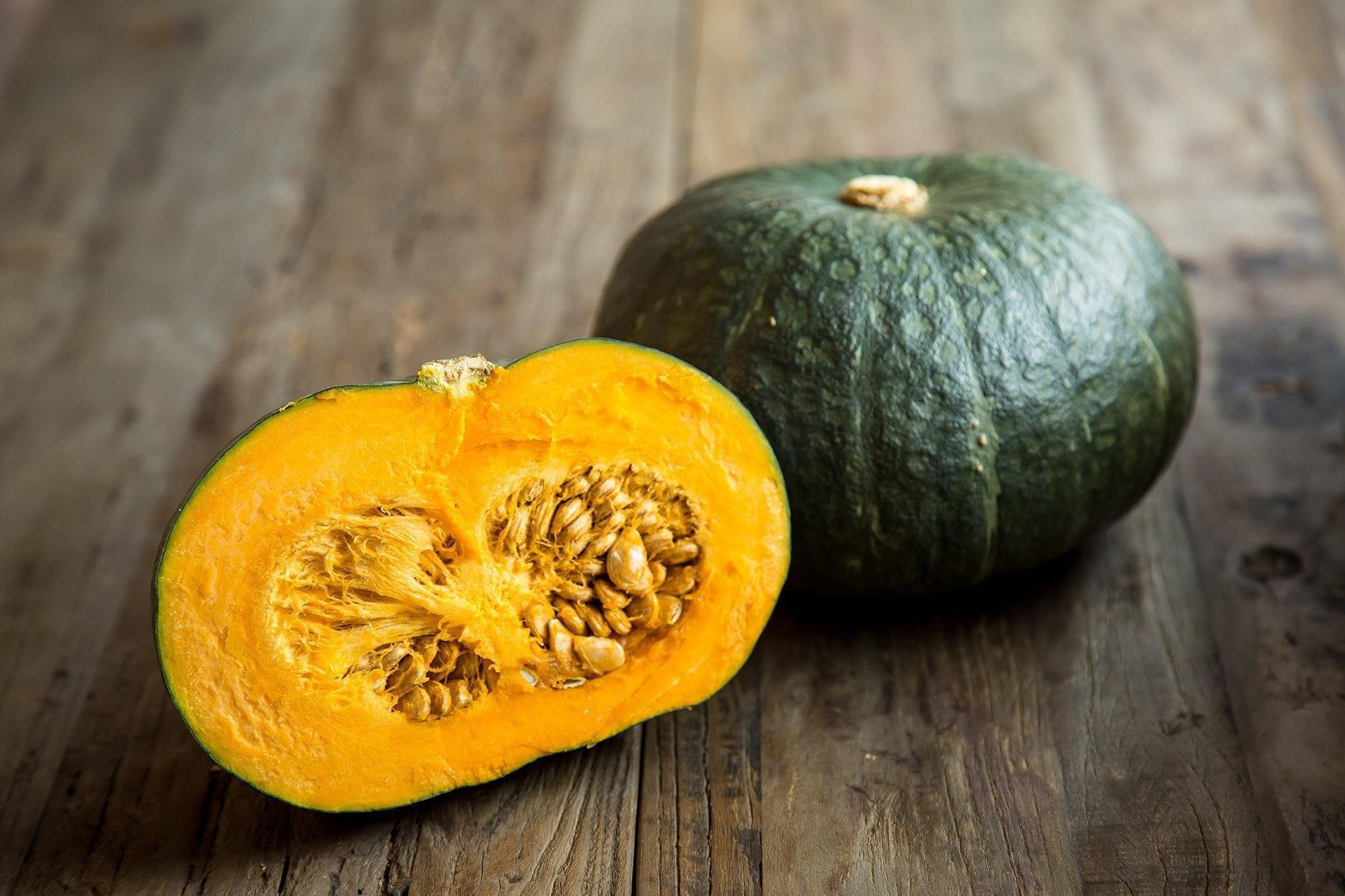
Japanese Pumpkin, known as Kabocha, is a green-skinned squash with sweet, yellow-orange flesh. It is commonly used in soups, stews, and desserts.
Nutritional Value:
- High in beta-carotene, vitamins A and C, and dietary fiber.
- It is low in calories, making it a healthy choice for various diets.
Culinary Uses:
- It is ideal for roasting, steaming, or adding to soups and stews.
- It can be used in desserts like pies and cakes for a sweet flavor.
Growing Tips:
- Prefers warm, sunny locations with well-drained soil.
- Needs consistent watering, especially during flowering and fruiting.
Availability:
- Typically available from late summer to early winter.
- It is found in Asian grocery stores and some supermarkets.
5. Jackfruit
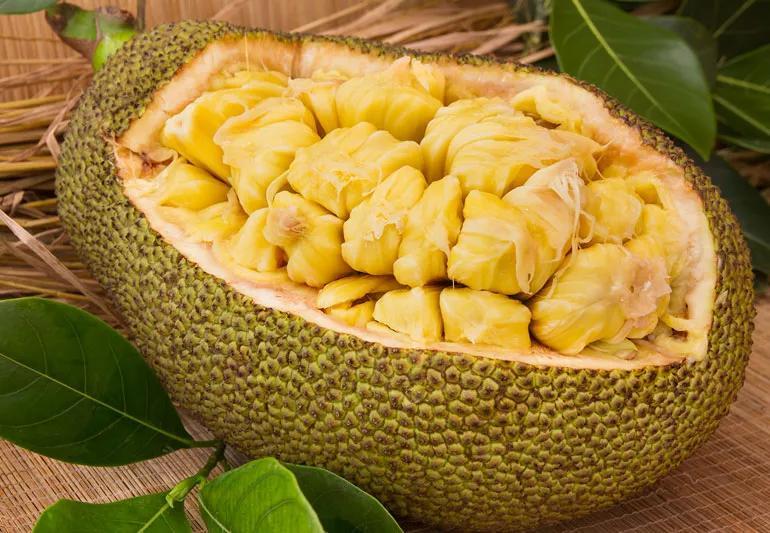
Jackfruit is a large, spiky fruit with flesh that can be eaten both ripe and unripe. In its unripe form, it is commonly used as a meat substitute due to its fibrous texture.
Nutritional Value:
- Rich in vitamins A and C, magnesium, and potassium.
- Contains a good amount of dietary fiber and protein.
Culinary Uses:
- It is used in savory dishes like curries and as a meat substitute in vegan recipes.
- When ripe, it can be eaten fresh or used in desserts.
Growing Tips:
- Thrives in tropical climates with plenty of rainfall.
- Requires deep, well-drained soil and protection from strong winds.
Availability:
- Available year-round in tropical regions.
- It can be found in specialty grocery stores and some supermarkets.
6. Jute Leaves
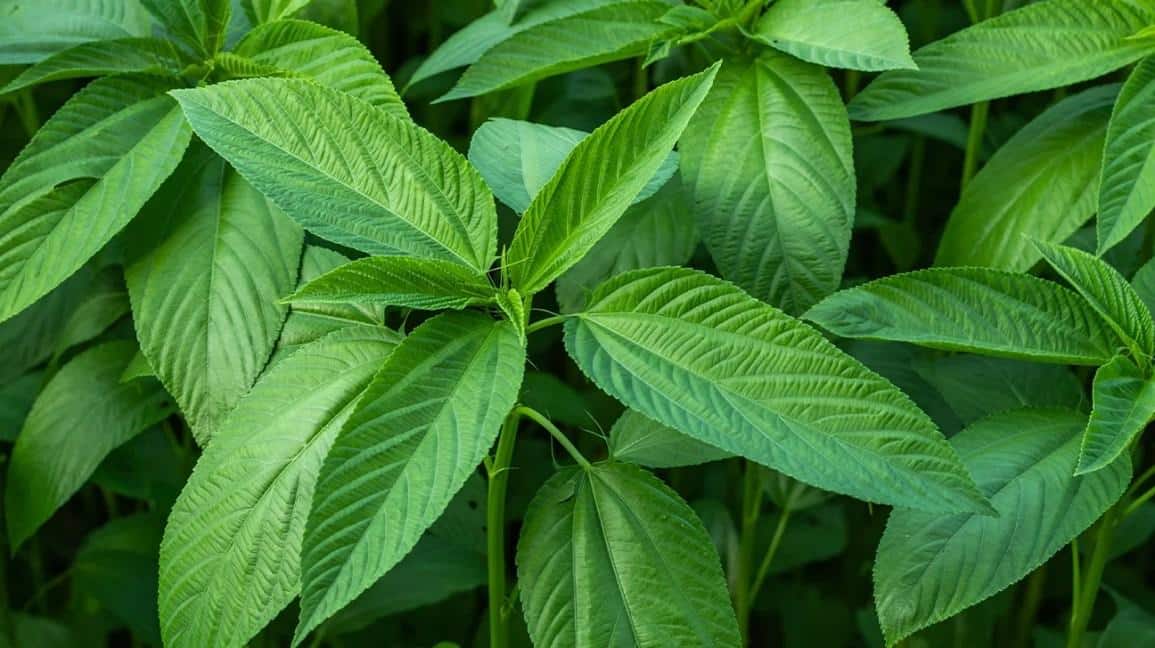
Jute Leaves are leafy greens popular in African and Asian cuisines. They taste slightly bitter and are often used in soups and stews.
Nutritional Value:
- High in vitamins A and C, calcium, and iron.
- Contains antioxidants and anti-inflammatory properties.
Culinary Uses:
- It is commonly used in soups, stews, and traditional dishes like Molokhia.
- It can be steamed, sautéed, or added to stir-fries.
Growing Tips:
- Prefers warm, humid climates and well-drained soil.
- Requires regular watering and partial shade for optimal growth.
Availability:
- Available during the warm months, typically from spring to early fall.
- Found in African and Asian grocery stores.
7. Japanese Eggplant
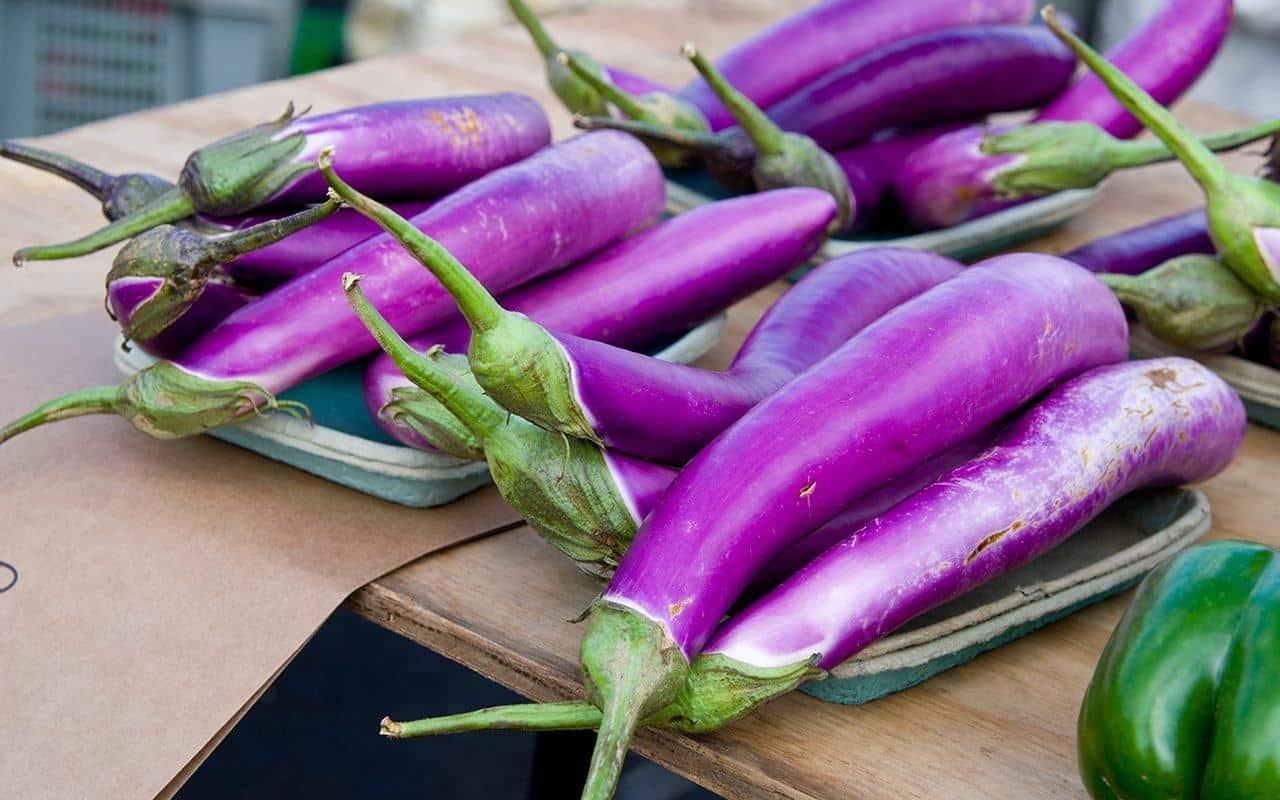
Japanese Eggplant is a long, slender eggplant with a mild flavor. It is popular in Japanese cuisine and used in various dishes.
Nutritional Value:
- Rich in dietary fiber, vitamins C and K, and potassium.
- Contains antioxidants, particularly in the skin.
Culinary Uses:
- It is ideal for grilling, roasting, or adding to stir-fries.
- It can be used in dishes like miso-glazed eggplant or tempura.
Growing Tips:
- Prefers warm, sunny climates with well-drained soil.
- Requires consistent watering, especially during the fruiting stage.
Availability:
- Available year-round, with peak season in summer.
- It is found in most supermarkets and farmers’ markets.
8. Jewel Yam
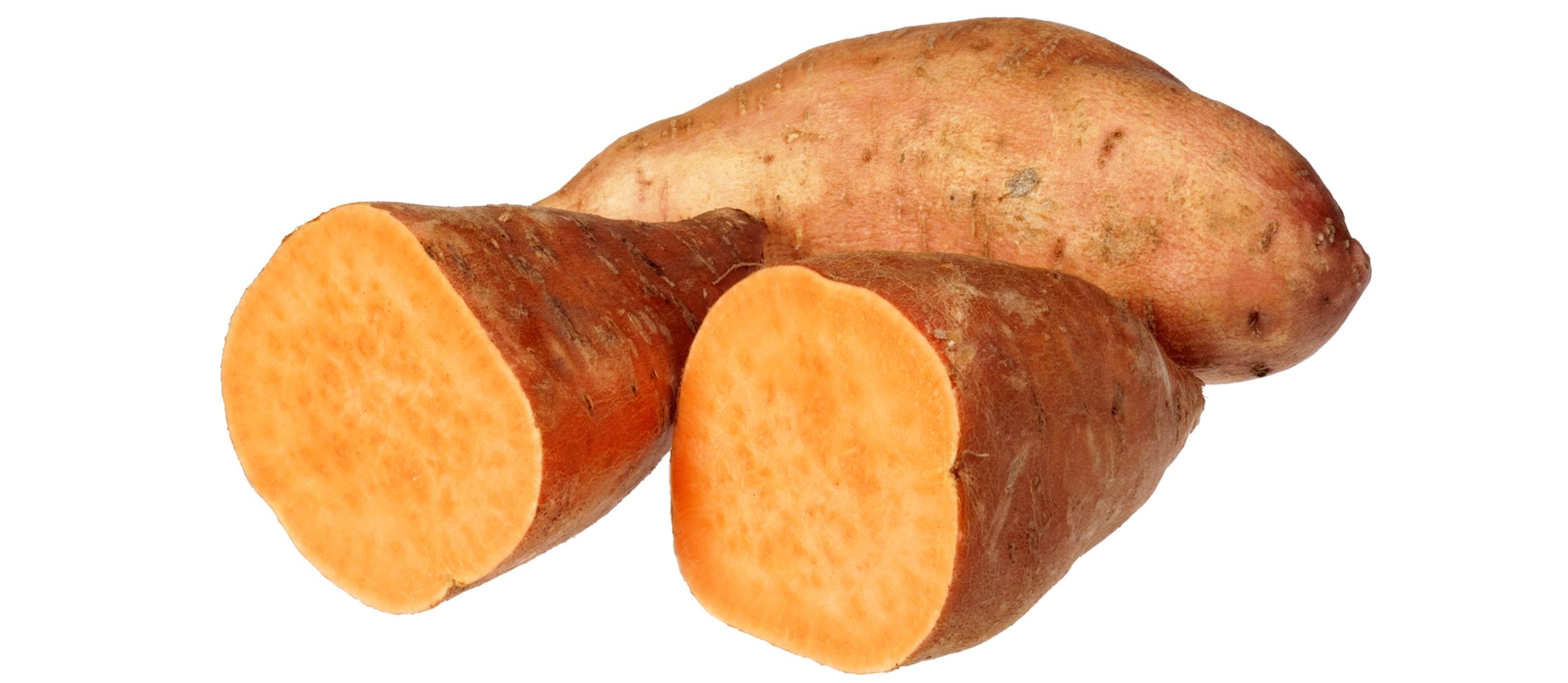
Jewel Yam is an orange-fleshed tuber with a sweet flavor. It is often confused with sweet potatoes and is commonly used in various culinary dishes, especially in the southern United States.
Nutritional Value:
- High in vitamins A and C, potassium, and dietary fiber.
- It is low in fat and contains complex carbohydrates.
Culinary Uses:
- It can be baked, roasted, mashed, or used in desserts like pies.
- They are often featured in holiday dishes like candied yams.
Growing Tips:
- Thrives in warm climates with well-drained, sandy soil.
- Requires consistent watering and a long growing season.
Availability:
- Available year-round, with peak season in the fall.
- It is found in most supermarkets and farmers’ markets.
9. Japanese Yam (Satsumaimo)
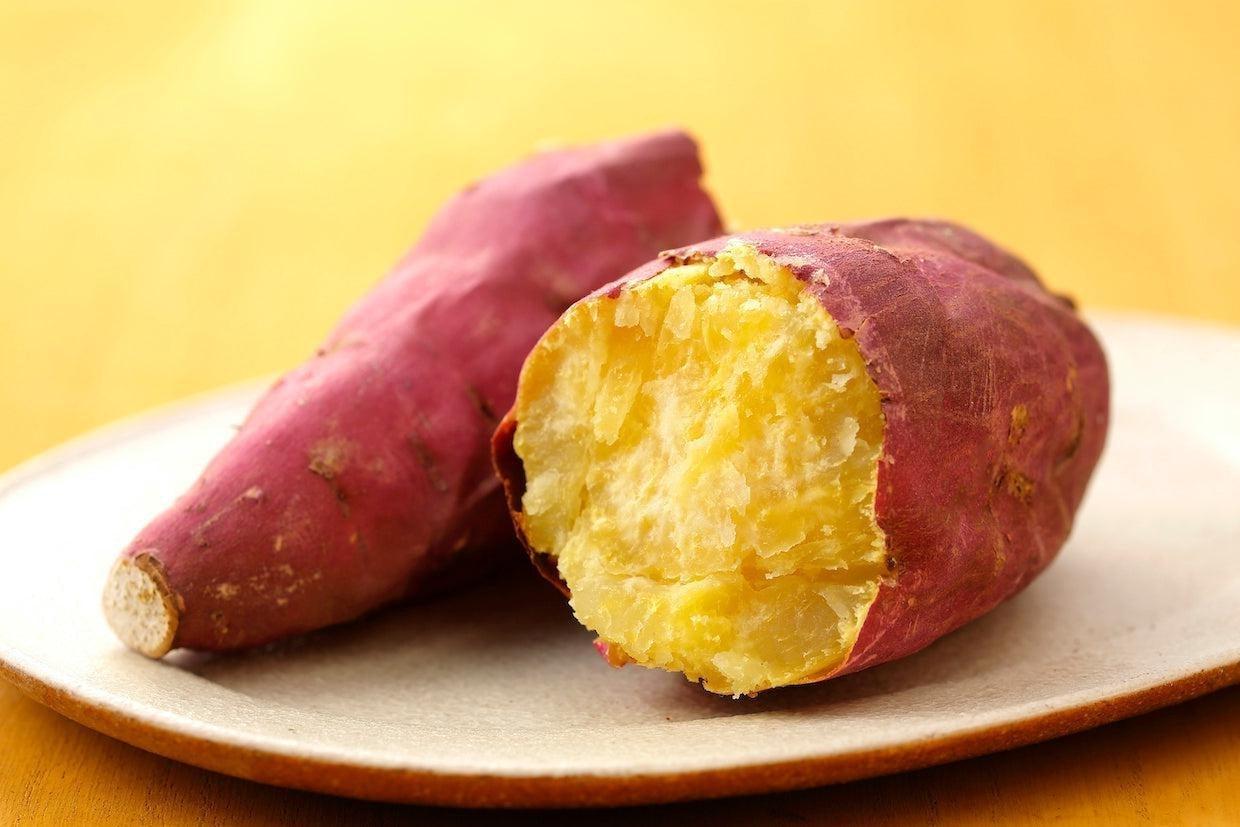
Japanese Yam, also known as Satsumaimo, is a sweet potato with reddish-purple skin and creamy white flesh. It is a popular snack food in Japan, often enjoyed roasted.
Nutritional Value:
- Rich in vitamins A and C, potassium, and dietary fiber.
- It contains antioxidants and has a naturally sweet flavor.
Culinary Uses:
- Typically roasted, steamed, or used in desserts.
- It can be mashed or added to soups and stews.
Growing Tips:
- Thrives in warm climates with well-drained, sandy soil.
- Requires consistent watering and a long growing season.
Availability:
- Available year-round, with peak season in the fall.
- It is found in Asian grocery stores and some supermarkets.
10. Japanese Mustard Spinach (Komatsuna)
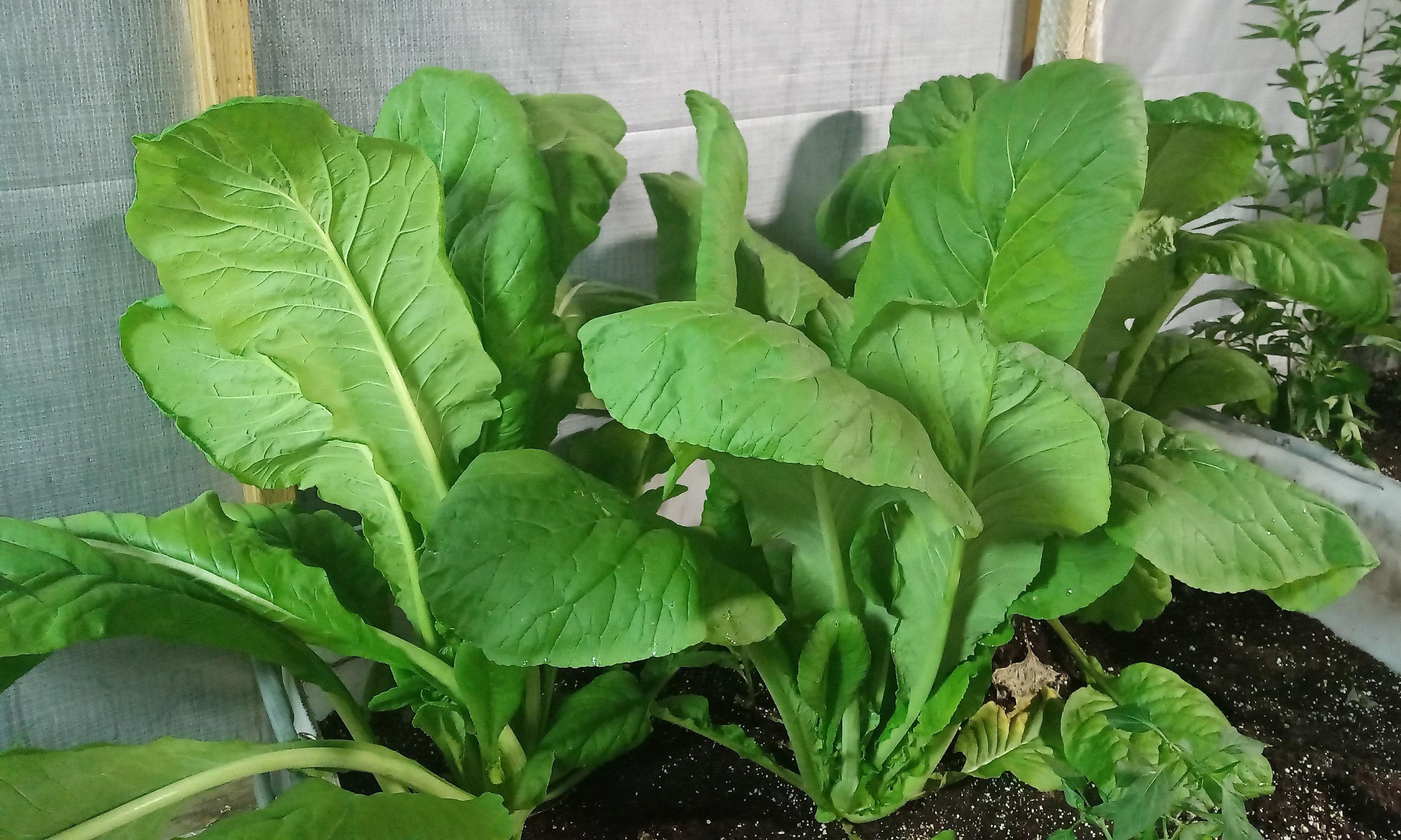
Japanese Mustard Spinach, known as Komatsuna, is a leafy green with a mild, slightly mustard-like flavor. It is a staple in Japanese cuisine and used in various dishes.
Nutritional Value:
- Rich in vitamins A and C, calcium, and iron.
- Contains antioxidants and anti-inflammatory properties.
Culinary Uses:
- Used in salads, soups, and stir-fries.
- Can be sautéed, steamed, or added to noodle dishes.
Growing Tips:
- Prefers cool, moist climates and well-drained soil.
- Requires regular watering and partial shade for optimal growth.
Availability:
- Available year-round, with peak season in spring and fall.
- It is found in Asian grocery stores and some supermarkets.
11. Japanese Radish (Daikon)
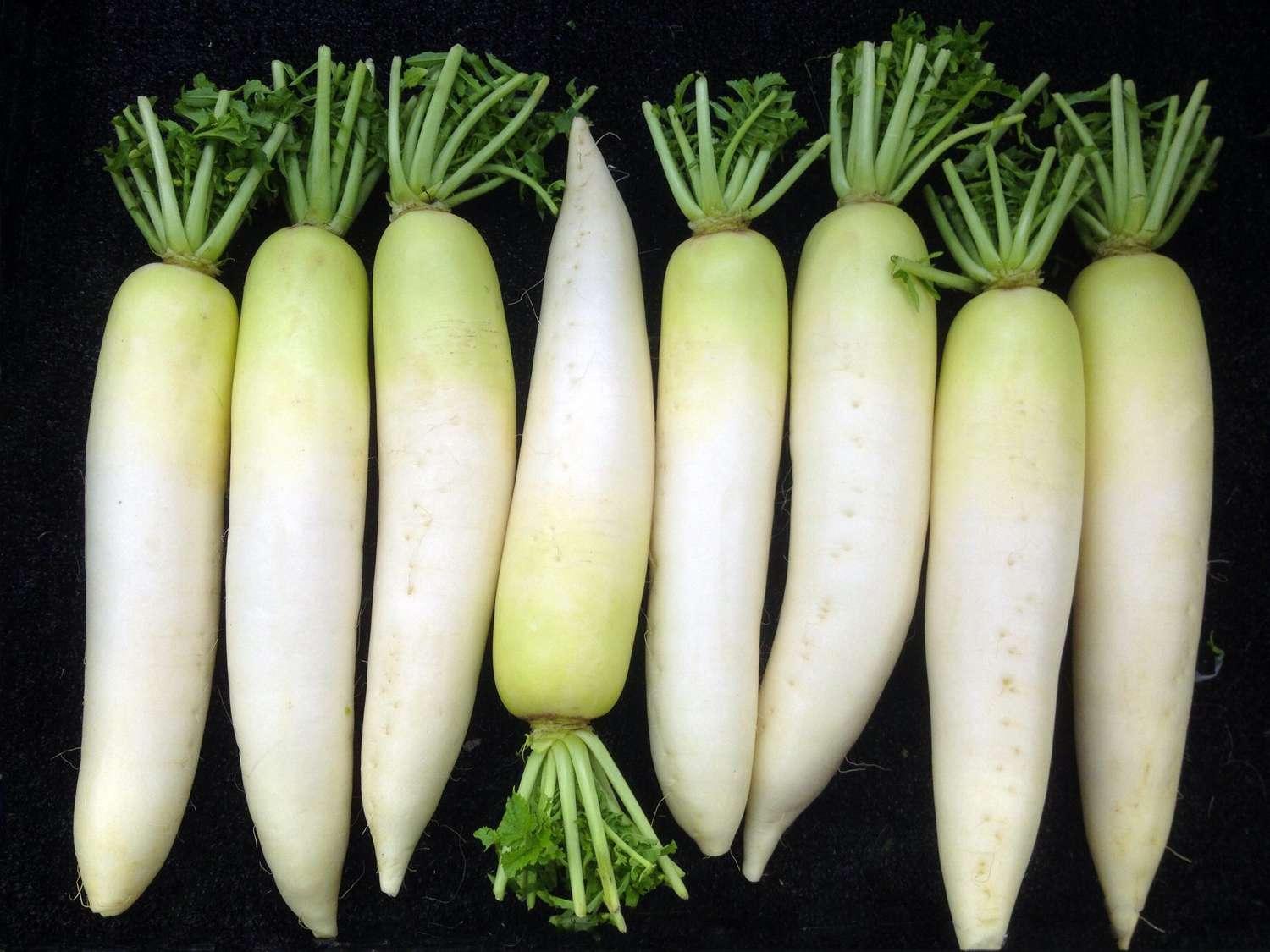
Japanese Radish, commonly known as Daikon, is a large, white root vegetable with a mild, peppery flavor. It is widely used in Japanese, Chinese, and Korean cuisines.
Nutritional Value:
- High in vitamin C, potassium, and fiber.
- Low in calories and supports digestive health.
Culinary Uses:
- Used in salads, pickled dishes, and soups.
- Can be grated, sliced, or added to stews and stir-fries.
Growing Tips:
- Prefers cool weather and well-drained soil.
- Requires regular watering and thinning for optimal root development.
Availability:
- Available year-round, with peak season in winter.
- Found in Asian grocery stores and some supermarkets.
Conclusion
We’ve explored 11 unique vegetables that start with J. Each offers something special to your meals, from the crunchy jicama to the aromatic Japanese ginger.
Why does this matter? Adding these vegetables to your diet can boost your nutrition and bring new flavors.
I hope this list has sparked your curiosity. Next time you’re at the grocery store or farmer’s market, why not pick up one of these J-vegetables? Try adding jicama to your salad or cooking up some Jerusalem artichokes. You might find a new favorite!
Have you tried any of these vegetables before? Or do you know any other J-vegetables I missed? Share your thoughts in the comments below.
Let’s keep exploring the world of vegetables together!


